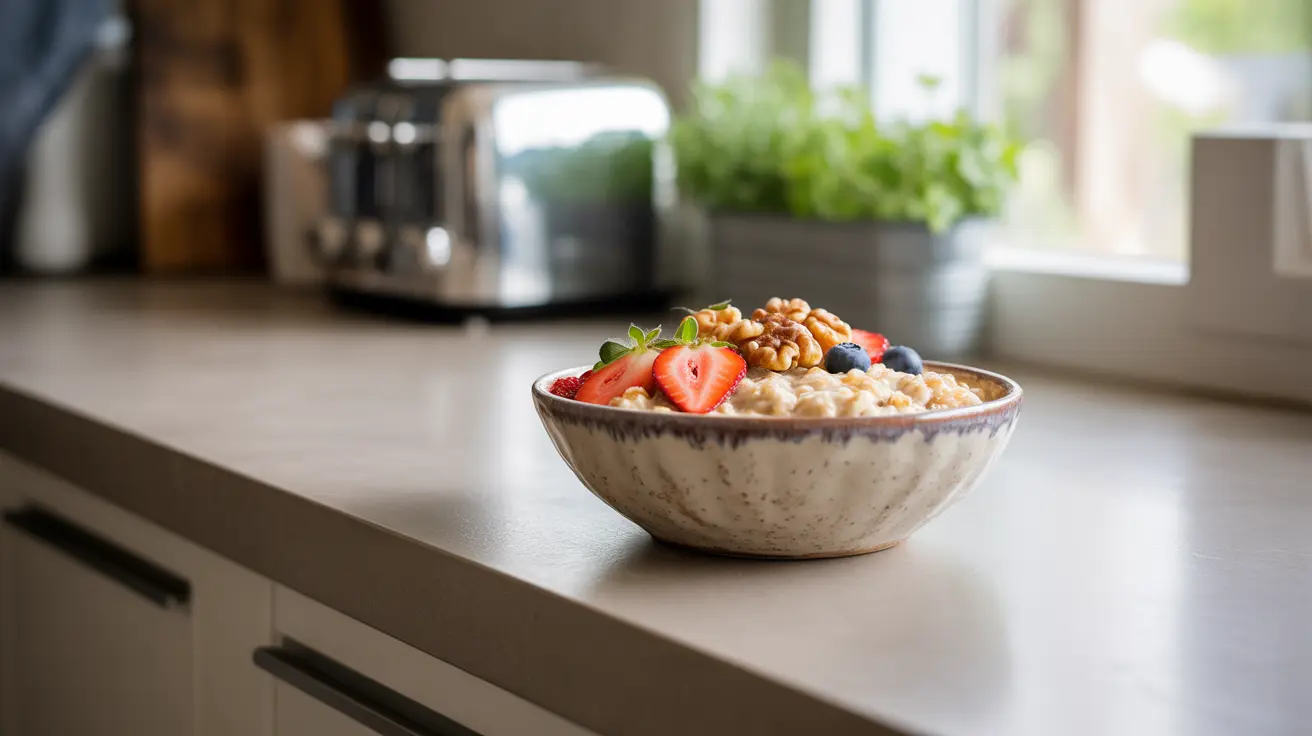For people with diabetes, choosing the right breakfast can significantly impact blood sugar control throughout the day. Oatmeal, a popular breakfast staple, offers unique benefits and considerations for diabetes management. Understanding how to properly incorporate oatmeal into a diabetic diet can help optimize blood sugar levels while enjoying this nutritious food.
Understanding Oatmeal's Impact on Blood Sugar
Oatmeal contains complex carbohydrates and high levels of soluble fiber, particularly beta-glucan, which affects how quickly glucose enters the bloodstream. This fiber content helps slow down digestion and sugar absorption, potentially preventing rapid blood sugar spikes that are particularly concerning for people with diabetes.
Types of Oatmeal for Diabetes Management
Not all oatmeal varieties are created equal when it comes to diabetes management. The processing level significantly affects how quickly the body converts oatmeal into glucose.
Steel-Cut Oats
Steel-cut oats are the least processed form, maintaining more of their natural fiber content. They have a lower glycemic index compared to other varieties, making them an excellent choice for blood sugar management.
Rolled Oats
Traditional rolled oats offer a good middle-ground option, providing a balance between convenience and blood sugar control. They retain significant fiber content while cooking more quickly than steel-cut varieties.
Instant Oatmeal
While convenient, instant oatmeal typically has a higher glycemic index and often contains added sugars. People with diabetes should approach these varieties with caution or avoid them altogether.
Best Practices for Preparing Diabetic-Friendly Oatmeal
The way you prepare and serve oatmeal can significantly impact its effect on blood sugar levels. Consider these important factors:
- Watch portion sizes (typically 1/2 to 1 cup cooked)
- Add protein sources like nuts or seeds
- Include healthy fats such as chia seeds or almond butter
- Avoid added sugars and sweeteners
- Consider adding cinnamon, which may help with blood sugar control
Timing and Portion Control
For optimal blood sugar management, timing your oatmeal consumption and controlling portions are crucial. Consider eating oatmeal as part of a balanced breakfast that includes protein and healthy fats to help stabilize blood sugar levels throughout the morning.
Frequently Asked Questions
How does eating oatmeal affect blood sugar levels in people with diabetes?
Oatmeal affects blood sugar levels gradually due to its high fiber content, particularly soluble fiber. This fiber helps slow down digestion and glucose absorption, potentially preventing sharp blood sugar spikes when consumed as part of a balanced meal.
What types of oatmeal are best for managing diabetes and why?
Steel-cut oats and rolled oats are best for managing diabetes because they're less processed and have a lower glycemic index. These varieties maintain more of their natural fiber content, which helps regulate blood sugar levels more effectively.
Can oatmeal help improve insulin sensitivity and lower A1C in diabetes?
Regular consumption of whole grain oats may help improve insulin sensitivity due to their beta-glucan content and other beneficial compounds. While oatmeal alone won't dramatically lower A1C, it can be part of a healthy diet that helps manage blood sugar levels over time.
How should people with diabetes prepare oatmeal to avoid blood sugar spikes?
To avoid blood sugar spikes, prepare oatmeal with plain, unflavored oats, watch portion sizes, add protein and healthy fats, and avoid sweeteners. Including cinnamon and nuts can help further moderate blood sugar impact.
Are there any risks or precautions for people with diabetes when eating oatmeal?
The main risks involve portion size and preparation method. People with diabetes should avoid instant varieties with added sugars, monitor their portions carefully, and be aware that even healthy oatmeal will impact blood sugar levels. It's important to test blood sugar responses to determine individual tolerance.




